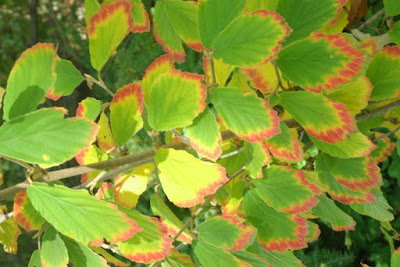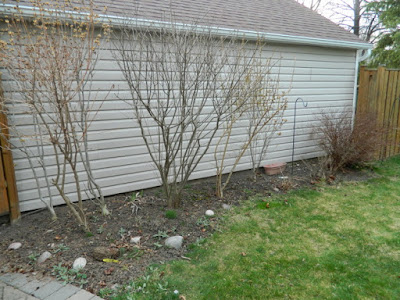Occasionally, a gardening cliché is true
If you've been gardening long enough, you've come across your share of horticultural rules of thumb, proverbs, observations, truisms, etc.. Nuggets of horticultural wisdom like "choose the right plant for the right space", "feed the soil, not the plant" and "plant a fifty-five cent plant in a five dollar hole" (amen) are good pieces of advice. I wish I'd listen to these adages as a new gardener many years ago--it would have saved me a ton of heartache (and cash) by preventing many of the plants I bought from inexplicably perishing or taking over the entire bed. But this is just tuition paid by a newbie gardener so "chin up", to use another idiom.
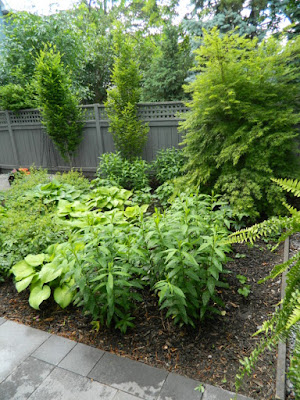 |
| New Danforth Greektown perennial garden |
Speaking of idioms. another horticultural saying came to my mind when I last visited a garden I designed about three years ago in Toronto's Greektown neighbourhood (a.k.a. "The Danforth" area).
(The installation is profiled in my blog post titled A new garden in the Danforth/Greektown area of Toronto: a case study.)
I usually tidy up this backyard garden in the spring and fall so it's interesting to see if the original plants I planted have thrived or not. Even after researching what the "correct" plant should be based on existing site conditions and the garden owner's preferences, whether the newly transplanted perennial, shrub or tree actually lives is a bit of crap shoot. Things just fade away, occasionally, even with adequate cultural conditions and plant care. The plant warranty honoured by the garden centre is there for such tragedies.
Transplanting not only involves the "right plant, right place" adage but also, when spacing out the proposed holes, imaging how the mature size of whatever you're plopping in (remember, "five dollar hole") will look in five years and beyond (this is especially true for trees but some homeowners ignore this, to the future benefit of tree trimming companies.) For herbaceous perennials, it's been said, one should expect them to "sleep" during the first year after transplanting. "creep" during year two and, fingers crossed, "leap!" in year three and beyond.
But what does this saying mean?
It's not unusual for newly planted perennials to simply "sit" in the garden. They've likely experienced some transplant shock from being displaced out of the cozy confines of the greenhouse straight into your garden but I also suspect they're using more food energy (carbohydrates) in establishing new roots and not necessarily concerned about pumping out new leaves or flowers for our enjoyment.
That's my best guess anyway.
Nevertheless, I'm delighted to report that sleeping, creeping and leaping definitely have occurred in this perennial garden over the past three years!
East view:
I've broken up the "garden in progress" pictures into three views to make things easier to follow.
Below is the set looking east showing how the newly transplanted perennials and "Seiryu" cut-leaf Japanese maple are doing since 2014. (The two two columnar European Hornbeams (Carpinus betulus "Columnaris" ) were planted in 2015.)
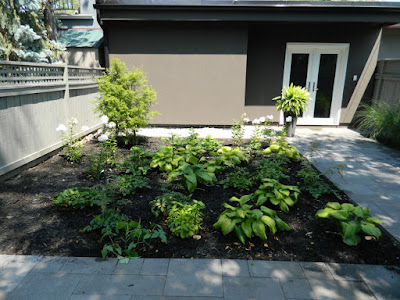 |
| The Danforth new garden design after |
 |
| "Honorine Jobert" Japanese Anemone (Anemone x hybrida) and friends |
 |
| New Greektown Toronto perennial garden |
If you're wondering out loud "holy cow, that's a lot of green!", you're absolutely right. The client wanted perennials and trees with green foliage and white flowers. That's it. Whether the monochromatic colour scheme is tranquil or boring is, of course, determined through the eyes of the beholder. I personally find it calming and quasi-formal without the need for boxwoods, yews and other evergreens clipped within an inch of their lives. The different foliage shapes give enough contrasting visual interest to prevent one from falling asleep in the garden (although there are worse experiences in life.)
North view:
 |
| The Danforth garden design before |
 |
| The Danforth garden design after |
 |
| New Danforth backyard year two |
 |
| Greektown Toronto garden design after |
North-east view:
 |
| The Danforth Toronto garden design before |
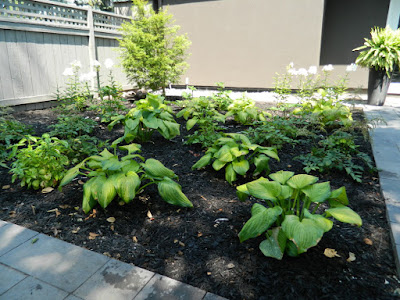 |
| The Danforth Toronto garden design after |
 |
| Monochromatic green garden design Danforth backyard |
 |
| Greektown Toronto new perennial garden |
I find the "sleep, creep and leap" rhyme is useful to manage the expectations of impatient gardeners and, importantly for me, impatient clients. On the other hand, "sleep, creep and weep" is just as educational to the gardener. I'll readily admit I've planted trendy and "must-have" (i.e., expensive) perennials and shrubs as dictated by some marketing guy or gal only to experience the silly plant sulking and disappearing after a few years.
As I mentioned earlier, gardening is a bit of a crap shoot at times but we still dig, hope and smile if we're successful.








